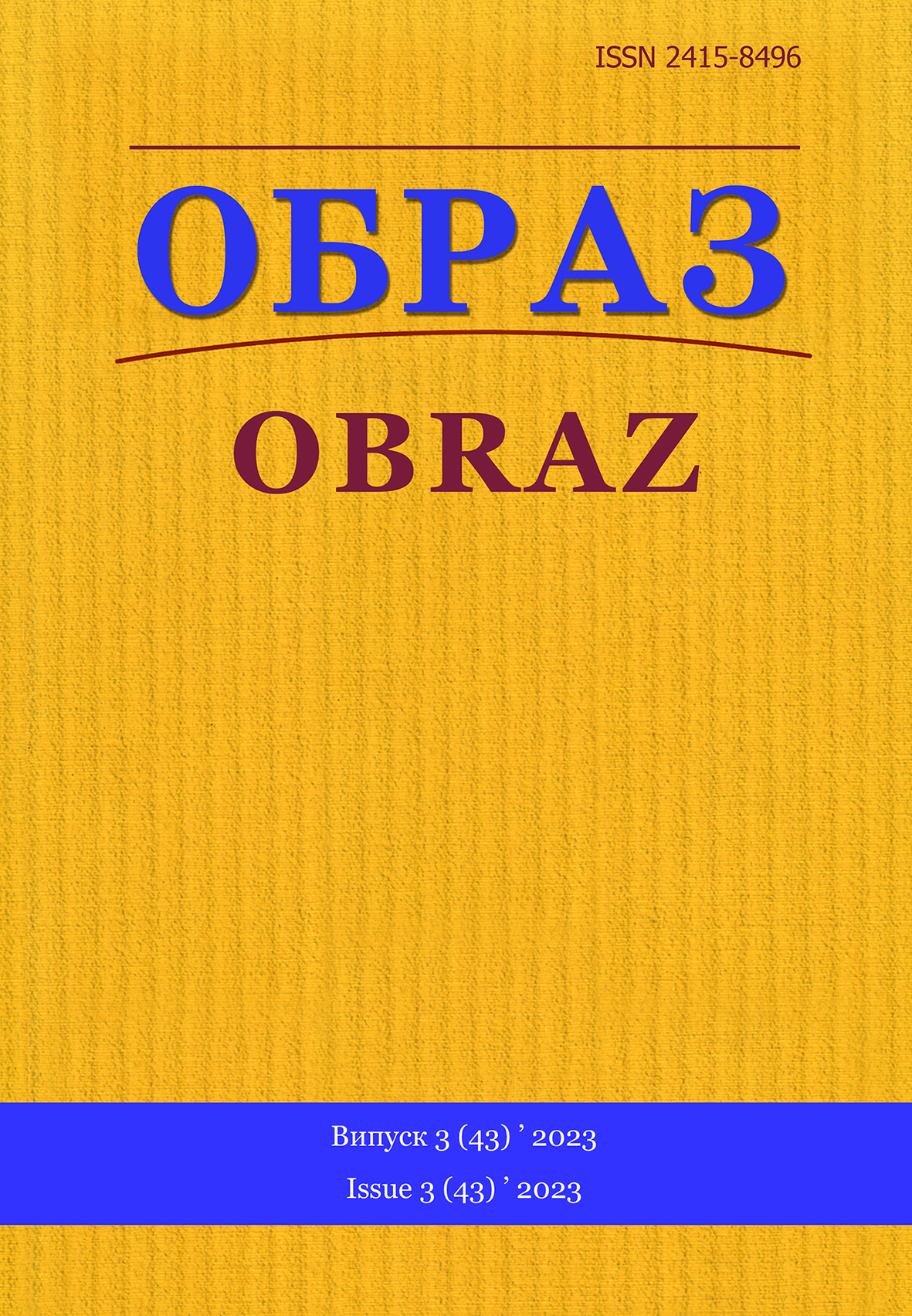Abstract
Introduction. Digital photography, mobile technologies, and social platforms have actualized the problem of the ethics of representation and contemplation of cruelty, violence, and death. In Russian-Ukrainian war’s context, the topic’s relevance is due to the ongoing discussions in the public space about the appropriateness of disseminating photographs that depict violence or suffering.
Relevance of the study. The relevance is due to the role of photo facts in the construction of media reality, social attitudes and individual experiences. The goal is to systematize the conceptual dominants of the debate on the ethics of photographic representation of war.
Methods. On the basis of empirical analysis, the main components of the scientific problem are updated, in particular the subject of research, its scientific and applied contexts. The system analysis was used in the work with the theoretical base of the research and establishment of interdisciplinary connections in the discussion about the ethical and aesthetic modes of functioning of sensitive media content, the problems of photorepresentation of war in the media. Comparative, analytical and descriptive methods ensured the disclosure of the features of the ethical-aesthetic paradigm of the media essence of photography. Generalization and synthesis made it possible to argue the conclusions, to find out their correspondence to the tasks.
Results. Based on the systematization of the representatives’ concepts of various scientific fields (photography theorists, philosophers, art historians, social communication researchers, etc.), it is proved that ethical issues related to the creation, distribution, and perception of sensitive content relate to different contexts: exploitation and retraumatization, affect and aestheticization, objectification and politicization. Scholars and experts focus on a critical analysis of the nature and extent of the viewer’s participation in the visual field, the modes of civic engagement and the inherent empathic, sentimental and passive response.
Сonclusions. The study focuses on the role of sensitive war photographs in the construction of a political space in which the need for the visual as testimony, the right to advocacy, and the recognition of a crime are actualized. In turn, the visual intolerance of the represented violent act or suffering provokes a discussion of the problem of aestheticizing images as a dilemma between deliberate embellishment and identification of formal and compositional expressive means of photography.
References
1. Bushkovska, N. (2023, January 17), “The danger of artificial intelligence images of the alleged tragedy in Dnipro”, Bez Brehni [Without Lies], available at: https://without-lie.info/factcheck/yaka-nebezpeka-u-kartynkakh-vid-shtuchnoho-intelektu-pro-nibyto-trahediiu-u-dnipri/ (accessed 28 June 2023).
2. Denysenko, L. (2023, March 14), [“I read the artistic vision of capturing grief, which, through the photograph of personal grief, became part of the author’s Ukrainianness and burning, and it hasn’t let go of me”], Facebook, available at: https://www.facebook.com/larysa.denysenko/posts/pfbid02peWWt7Vzk9aeyuaPg1YsAv3Tir6XVuV5NFhPbfL4GNPBLBEV1zZ9Ap8QzyvuzTpzl?ref=embed_post (accessed 28 June 2023).
3. Naidenko, Yu. (2023, March 15), “Contemplation of grief or memory of war. A debate erupted online over the Liberovs’ photo from the funeral of the Ukrainian hero Da Vinci”, New Voice, available at: https://life.nv.ua/ukr/socium/skandal-navkolo-foto-narechenoji-da-vinchi-z-yogo-pohoronu-u-chomu-problema-novini-ukrajini-50310792.html (accessed 28 June 2023).
4. Chervonyk, O. (2023, March 14), “Photographing grief: some thoughts on ethics and the new Ukrainian martyrologist”, Ukrainska Pravda. Zhyttia [Ukrainian Truth. Life], available at: https://life.pravda.com.ua/columns/2023/03/14/253331/ (accessed 28 June 2023).
5. Adelman, R. (2015), “«The «Coffin», the Camera, and the Commodity: Visualizing American Military Dead at Dover”, On not looking: The paradox of contemporary visual culture, Taylor & Francis Group, New York, pp. 229–250.
6. Azoulay, A. (2008), The Civil Contract of Photography, Zone Books, New York, 585 p.
7. Batchen, G., Gidley, M., Miller, N.K., & Prosser, J. (2012), Picturing Atrocity: Photography in Crisis, Reaktion Books London, UK, 256 p.
8. Bernstein, J.M. (2012), Preface, Ethics and images of pain, Taylor & Francis Group, New York, pp. 11–14.
9. Cruz, E.G., & Lehmuskallio, A. (2016), Digital Photography and Everyday Life: Empirical Studies on Material Visual Practices, Taylor & Francis Group New York, 350 p.
10. Griffin, M. (2010), “Media images of war”, Media, War & Conflict, 3(1), pp. 7–41, available at: https://doi.org/10.1177/1750635210356813 (accessed 21 June 2023).
11. Gustafsson, H., & Grønstad, A. (2012), Ethics and Images of Pain, Taylor & Francis Group, New York, 262 p.
12. Mirzoeff, N. (2012), Watching Babylon, Routledge, London, UK, 216 p.
13. Möller, F. (2013), Visual Peace: Images, Spectatorship, and the Politics of Violence, Palgrave Macmillan Limited, Houndmills, UK, 288 p.
14. Pardo, R., & Morcate, M. (2016), “Illness, death and grief”, Digital photography and everyday life, Taylor & Francis Group, New York, pp. 70–85.
15. Perlmutter, D.D. (1998), Photojournalism and Foreign Policy: Icons of Outrage in International Crises, Praeger Westport, Conn, 192 p.
16. Reinhardt, M. (2012), “Painful Photographs: From the Ethics of Spectatorship to Visual Politics”, Ethics and images of pain, Taylor & Francis Group New York, pp. 57–80.
17. Reinhardt, M., Edwards, H., Duganne, E., Stomberg, J., & Bal, M. (2007), Beautiful Suffering: Photography and the Traffic in Pain, Essays by Mark Reinhardt, John Stomberg, Erina Duganne, Holly Edwards, Mieke Bal, January 28 – April 30, 2006, Williams college Museum of art, Williamstown, 216 p.
18. Sontag, S. (2003), Regarding the Pain of Others, Farrar, Straus and Giroux, New York, 207 p.
19. Sontag, S. (2002), On photography, Farrar, Straus and Giroux, New York, NY, 131 p.
20. Stallabrass, J. (2020), Killing for show: Photography and War in Vietnam and Iraq, Rowman & Littlefield Publishers, Incorporated, 336 p.
21. Zelizer, B. (2010), About to die: How News Images Move the Public, Oxford University Press, New York, 432 p.
22. Zelizer, B. (2017), “Seeing the present, remembering the past: Terror’s representation as an exercise in collective memory”, Television & New Media, 19 (2), pp. 136–145, available at: https://doi.org/10.1177/1527476417695592 (accessed 21 June 2023).

This work is licensed under a Creative Commons Attribution 4.0 International License.

